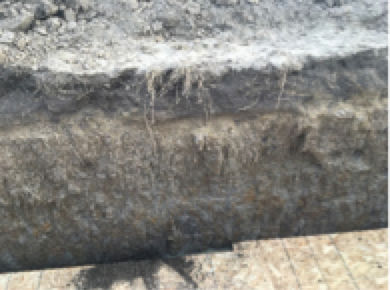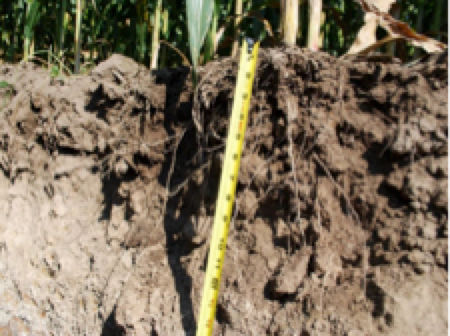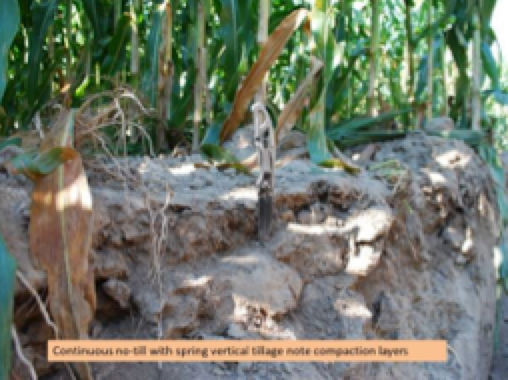3 MIN READ
Benefit of Digging a Soil Pit to Observe Soil Profile and Structure
January 8, 2020
Soil is a mixture of organic matter, minerals, gases, liquids and organisms that is often referred to as the “building block of all life on Earth.” While that may sound a bit grandiose, agricultural productivity is certainly dependent upon the soil in which crops are planted. And while growers carefully manage crops throughout the growing season, above-ground management decisions can have dramatic and often unseen impacts on the soil below.
In other words, what occurs above ground can both enhance soil structure and assist plant root growth, or it can create long-term issues that can dampen yield for years to come. Poor air, water and nutrient movement caused by erosion, tillage, release of carbon and compaction can all negatively impact crop yields. The best way to assess the impact of above-ground operations on soil and to examine overall soil health is to dig a root pit.
Excavating a soil pit typically requires the use of a backhoe or skid loader. Soil pits should be wide enough to allow workable access to the area, be dug to at least 4 feet in depth, and cross multiple crop rows if excavated during the growing season. If multiple distinct soil types are present, digging a pit in each can allow for comparison of soil conditions.
When examining a soil root pit, the various soil layers (called horizons) should be clearly visible along with the now exposed plant roots (Figure 1). A healthy soil will exhibit a thick, black layer of topsoil (the A horizon) followed by a zone that is typically lighter in color and high in clay content (the B horizon). Another important soil characteristic to look for is good soil structure. Healthy soil should crumble easily in your hand, and the soil in the upper horizons should take on a granular appearance (a shape like that of a grain of sand) (Figure 2). Additionally, the presence of earthworm channels is an indication of good porosity, which is key to water, nutrient and air movement.


Finally, when assessing the health of your soil, use the development of plant roots to help indicate the presence of poor soil structure, compaction or restricted nutrient uptake (Figure 3). When plant roots encounter a compacted zone, they tend to spread out horizontally instead of vertically. Additionally, cloddy soil that forms very large chunks in your hand is indicative of poor soil structure, which is usually caused by aggressive tillage. Soil with poor structure drains poorly, results in surface ponding, has reduced poor space and nutrient movement, and requires higher fertilizer rates.

Schoeneberger, P.J., Wysocki, D.A., Benham, E.C., and Soil Survey Staff. 2012. Field book for describing and sampling soils, Version 3.0. Natural Resources Conservation Service, National Survey Center, Lincoln, NE. https://www.nrcs.usda.gov/Internet/FSE_DOCUMENTS/nrcs142p2_052523.pdf
Soil Management: Digging a soil pit. Pro-Soil Ag Solutions. 2012. https://www.pro-soil.com/.
Web sites verified 11/11/19.